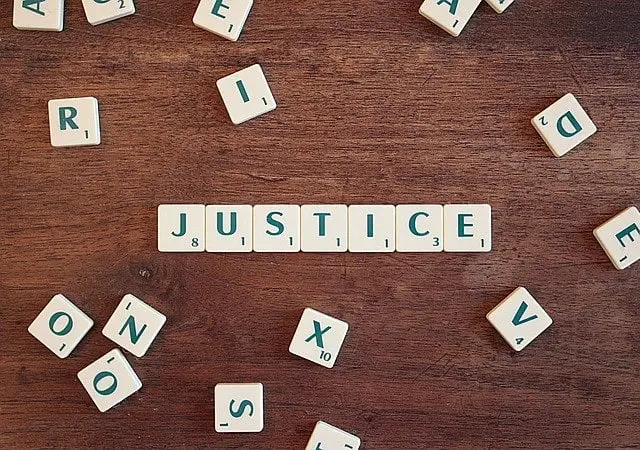At the heart of the United States’ approach to addressing insolvency and providing a path for financial rebirth lies the Bankruptcy Clause. Enshrined in the U.S. Constitution, this pivotal clause grants Congress the exclusive authority to enact uniform laws on the subject of bankruptcies throughout the United States. Its significance cannot be overstated, as it underpins the federal bankruptcy system, ensuring consistency and fairness in the treatment of debtors and creditors across state lines.
The Bankruptcy Clause is more than a mere legislative power; it is a foundational principle that reflects the balance between creditors’ rights and debtors’ need for a fresh start. By centralizing bankruptcy law at the federal level, the clause prevents a patchwork of state laws that could lead to inequalities and inefficiencies in the bankruptcy process. This uniformity is crucial for both individuals and businesses contemplating bankruptcy, as it provides predictable and equitable rules for resolving their financial difficulties.
The development of bankruptcy laws in the United States has been a dynamic process, with the Bankruptcy Clause serving as a guiding light. From the early days of the republic, when bankruptcy laws were enacted temporarily in response to economic crises, to the comprehensive and permanent legislation of the modern era, the evolution of bankruptcy law has mirrored the changing needs of the American economy and its participants.
One of the most significant aspects of the Bankruptcy Clause is its flexibility. The U.S. Congress has utilized this power to create various forms of bankruptcy relief, tailored to different needs. These include Chapter 7 bankruptcy, which allows for the liquidation of a debtor’s non-exempt assets to pay creditors; Chapter 13 bankruptcy, offering individuals a way to reorganize their debts and make manageable payments over time; and Chapter 11 bankruptcy, which provides a reorganization framework for businesses, allowing them to continue operations while restructuring their financial obligations.
The Bankruptcy Clause also plays a critical role in protecting the rights of debtors and creditors. For debtors, bankruptcy provides a legal mechanism to discharge or reorganize debts, offering a chance to restart financially. For creditors, it establishes a fair and orderly process for recouping losses, ensuring that all creditors are treated equitably according to the priority of their claims.
Moreover, the Bankruptcy Clause influences the economy at large. By providing a mechanism for addressing insolvency, it helps to stabilize the financial system, preserve jobs, and facilitate the efficient reallocation of resources. In times of economic downturn, the availability of bankruptcy relief can act as a safety valve, preventing temporary financial setbacks from causing irreversible harm to individuals, businesses, and the broader economy.
In practice, the bankruptcy process involves several key steps, starting with the filing of a petition by the debtor. This initiates the automatic stay, a powerful feature that stops most collection actions against the debtor, providing immediate relief. The process then moves through various phases, including the meeting of creditors, the assessment and liquidation of non-exempt assets by the bankruptcy trustee, and, ultimately, the discharge of eligible debts.
Navigating the complexities of bankruptcy law requires careful planning and expert guidance. For those considering bankruptcy, consulting with a qualified attorney is essential. Legal professionals can provide valuable advice on the applicability of different types of bankruptcy, the potential outcomes, and the strategic considerations involved in filing.
The Bankruptcy Clause is a testament to the foresight of the framers of the Constitution, who recognized the importance of a unified approach to bankruptcy. Today, as in the past, it serves as a critical tool for managing financial distress, embodying the principles of fairness, efficiency, and the opportunity for a new beginning.
Historical Context and Legislative Milestones
The history of U.S. bankruptcy law is marked by its evolution in response to economic challenges and societal needs. Initially, bankruptcy laws were temporary measures, enacted during financial crises and repealed once stability was restored. The Bankruptcy Act of 1898 was the first to establish a permanent system of bankruptcy in the United States. Significant amendments, including the Chandler Act of 1938, the Bankruptcy Reform Act of 1978, and the Bankruptcy Abuse Prevention and Consumer Protection Act of 2005, have further refined the law, expanding protections for debtors and creditors alike. These legislative milestones reflect the dynamic nature of bankruptcy law and its capacity to adapt to changing economic landscapes.
Comparative Analysis of Chapter 7, 13, and 11 Bankruptcies
Chapter 7 Bankruptcy is often the quickest path for individuals seeking to discharge unsecured debts. Eligibility is determined by the means test, designed to ensure that those with sufficient income to repay debts pursue other forms of bankruptcy. Chapter 7 involves liquidating non-exempt assets to repay creditors, offering a fresh start to debtors within months.
Chapter 13 Bankruptcy appeals to individuals with regular income who wish to keep their assets while reorganizing debt. Debtors propose a repayment plan, typically lasting three to five years, allowing them to catch up on mortgages or car loans without the threat of foreclosure or repossession. Chapter 13 provides a mechanism for restructuring debts in a manageable way.
Chapter 11 Bankruptcy, known for its complexity, is primarily utilized by businesses seeking to reorganize while continuing operations. It offers a flexible framework for negotiating with creditors and restructuring debts. Though less common for individuals, Chapter 11 may be suitable for those with debts exceeding Chapter 13 limits or needing more sophisticated reorganization options.
Impact on Credit Scores and Future Endeavors
Filing for bankruptcy has a significant, albeit temporary, impact on credit scores. Chapter 7 bankruptcy can remain on a credit report for up to 10 years, while Chapter 13 and 11 bankruptcies stay for 7 years. This can affect borrowing costs, insurance rates, and even employment opportunities. However, the long-term impact can be mitigated through diligent financial management and credit rebuilding strategies.
Strategies for Financial Recovery and Credit Rebuilding
Post-bankruptcy, individuals can embark on a path to financial recovery by:
- Budgeting: Creating and adhering to a budget is crucial for managing expenses and avoiding future debt.
- Secured Credit Cards: These can serve as a tool for rebuilding credit, provided balances are paid in full monthly.
- Credit Builder Loans: Designed to boost credit scores, these loans demonstrate a debtor’s commitment to responsible credit use.
- Timely Payments: Consistently making on-time payments for any remaining or new obligations is essential for improving credit over time.
Impact of the Bankruptcy Clause on Consumer Bankruptcy: The Bankruptcy Clause has been instrumental in shaping consumer bankruptcy law in the United States. By ensuring a uniform bankruptcy process, it protects consumers facing financial distress, allowing them to discharge unsecured debts under Chapter 7 or reorganize their finances under Chapter 13. This section could delve into the legal mechanisms these chapters provide and how they embody the principles enshrined in the Bankruptcy Clause.
Business Bankruptcy and Economic Renewal: Chapter 11 bankruptcy, often associated with large corporations, highlights the Bankruptcy Clause’s role in economic renewal. This process allows businesses to continue operations while reorganizing their debts, preserving jobs, and maintaining supplier and customer relationships. An analysis of significant Chapter 11 cases, such as the reorganization of major airlines or retail chains, could illustrate the clause’s impact on the broader economy.
Integrating Real-Life Examples
Small Business Recovery: Discuss a small business that successfully navigated Chapter 11 bankruptcy to restructure and emerge stronger. While specific names and details remain generalized, this example can highlight strategies for negotiating with creditors, the importance of a reorganization plan, and the role of bankruptcy courts in facilitating a fair outcome.
Personal Bankruptcy Relief: Explore the story of an individual or family who filed for Chapter 7 bankruptcy to eliminate overwhelming debt from medical bills, credit cards, and loans. This narrative can focus on the process of liquidating non-exempt assets, the emotional and financial relief provided by the discharge of debts, and the journey toward rebuilding credit.
Innovative Use of Chapter 13: Present a scenario where an individual used Chapter 13 bankruptcy to save their home from foreclosure and reorganize personal finances. This case study can detail the creation of a repayment plan, the discipline required to adhere to the plan, and the legal protections afforded to debtors under the Bankruptcy Clause.
Important Legal Aspects
The Automatic Stay: A deeper examination of the automatic stay provision, which halts creditors’ collection efforts upon filing for bankruptcy, can underscore its significance in providing debtors with immediate relief and the opportunity to reorganize their finances without external pressure.
Dischargeable vs. Non-Dischargeable Debts: Clarify the distinction between dischargeable and non-dischargeable debts in bankruptcy proceedings. This differentiation is critical for debtors to understand what bankruptcy can and cannot do for them, reflecting the Bankruptcy Clause’s intent to provide a fresh start while ensuring certain obligations are met.
Exemptions and State Variability: Expand on how state-specific exemptions allow debtors to protect essential assets when filing for bankruptcy. This variability between states demonstrates the flexibility within the uniform framework established by the Bankruptcy Clause, accommodating regional differences in property values and living costs.
Disclosure: Generative AI Created Article
















